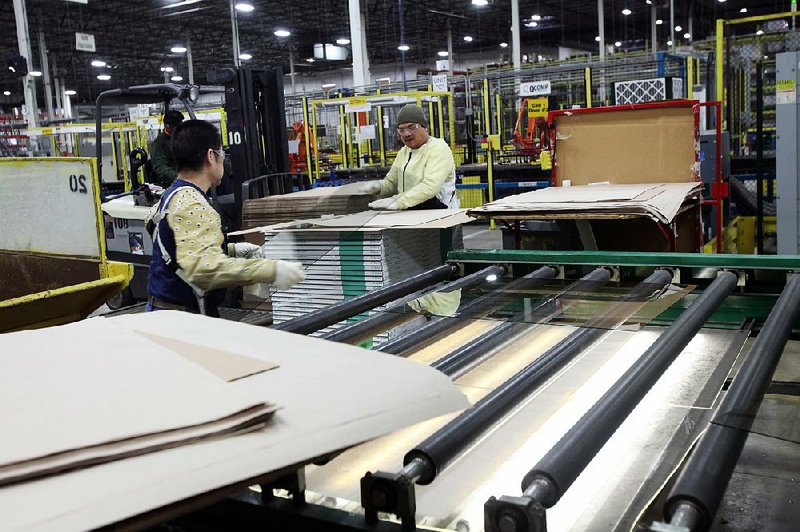WASHINGTON - U.S. manufacturing barely expanded last month as cold weather delayed shipments of raw materials and caused some factories to shut down.
The Institute for Supply Management, a trade group of purchasing managers, said Monday that its index of manufacturing activity fell to 51.3 in January from 56.5 in December. It was the lowest reading since May, although any reading above 50 signals growth. Manufacturers said export orders grew at a healthy pace but slightly less than in the previous month.
“The exceptionally cold weather and the harsh snowstorms - we all move a little bit slower in those periods, and the economy is no different,” said Russell Price, senior economist at Ameriprise Financial Inc. in Detroit. Still, “it should be some testament to the economy’s fundamental underpinnings that it was able to expand during such conditions.”
The figures suggest that U.S. manufacturing is slowing after a strong finish to last year. Auto sales have decelerated, and businesses are spending cautiously on machinery and other large factory goods. The slowdown means that economic growth in the first three months of this year may be less than the strong 3.6 percent annual pace in the second half of 2013.
In addition, China’s factory output grew at a slower pace in January, a government report over the weekend showed. That report added to concerns that the world’s second-largest economy is weakening.
On the positive side, a measure of Europe’s manufacturing sector showed that it expanded at the fastest pace in nearly three years.
Some economists cautioned against reading too much into Monday’s report on U.S. manufacturing, considering the effect winter weather had on business.George Mokrzan, chief economist at Columbus, Ohio-based Huntington Bank, said there were some “very unusual shutdowns as a result of the cold weather” at auto plants and other factories.
“I’d be a little bit cautious about interpreting too much from this report,” Mokrzan said. “If we don’t get a bounce next month, I would start asking deeper questions.”
Monday’s report showed that a measure of new orders plummeted 13.2 points to 51.2. That is the steepest drop since December 1980. A gauge of production also fell. Factories added jobs, the report showed, but at a slower pace.
Bradley Holcomb, the chairman of the Institute for Supply Management’s survey committee, said weather affected the report in several ways. Factory closings led to lower output and caused manufacturers to receive fewer new orders. Stockpiles of raw materials also fell as trucking routes were closed and shipping was delayed.
Other recent indicators have painted a mixed picture of manufacturing.
Factory output rose for a fifth straight month in December, according to the Federal Reserve. Manufacturers cranked out more cars, trucks, appliances and processed food.
But businesses are still spending cautiously. Orders for machinery and other large factory goods fell in December.
U.S. construction spending rose modestly in December, slowing from healthy gains a month earlier.
The Commerce Department said Monday that construction spending increased a scant 0.1 percent to a seasonally adjusted annual rate of $930.5 billion, down from a revised 0.8 percent increase in November.
The December increase was driven by a 2.6 percent rise in private residential construction, which hit an annual pace of $352.6 billion, the highest since June 2008. Spending on single-family homes rose 3.4 percent in December and 21.6 percent from a year earlier.
More than two-thirds of the residential construction market comes from single family homes.
Each new home creates an average of three jobs for a year and generates about $90,000 in tax revenue, according to the National Association of Home Builders.
Construction of apartments and condominiums was up 0.5 percent in December and up 27.3 percent from December 2012. Rising home prices have encouraged more people to rent instead of buy, encouraging developers to build more apartments.
Information for this article was contributed by Christopher S. Rugaber and Paul Wiseman of The Associated Press and Victoria Stilwell of Bloomberg News.
Business, Pages 23 on 02/04/2014
